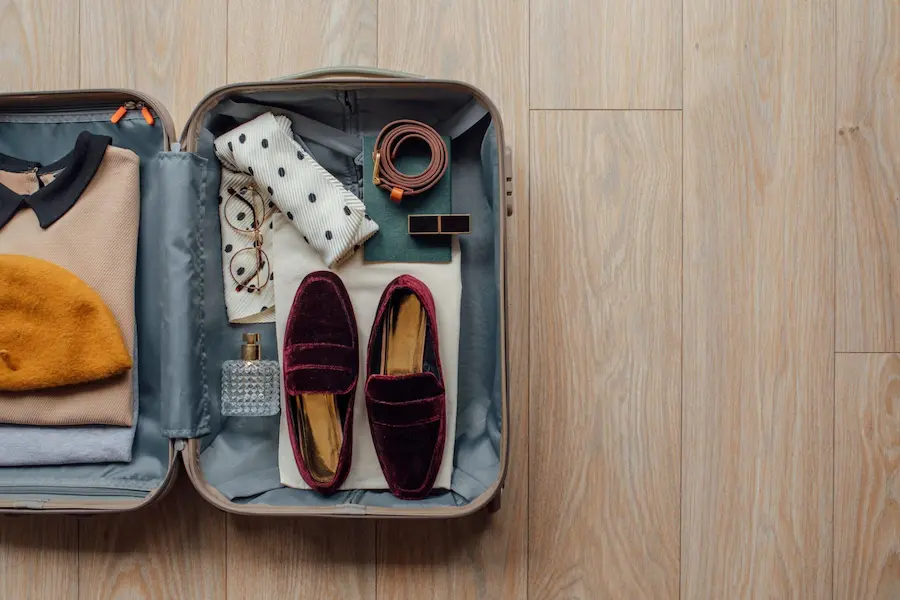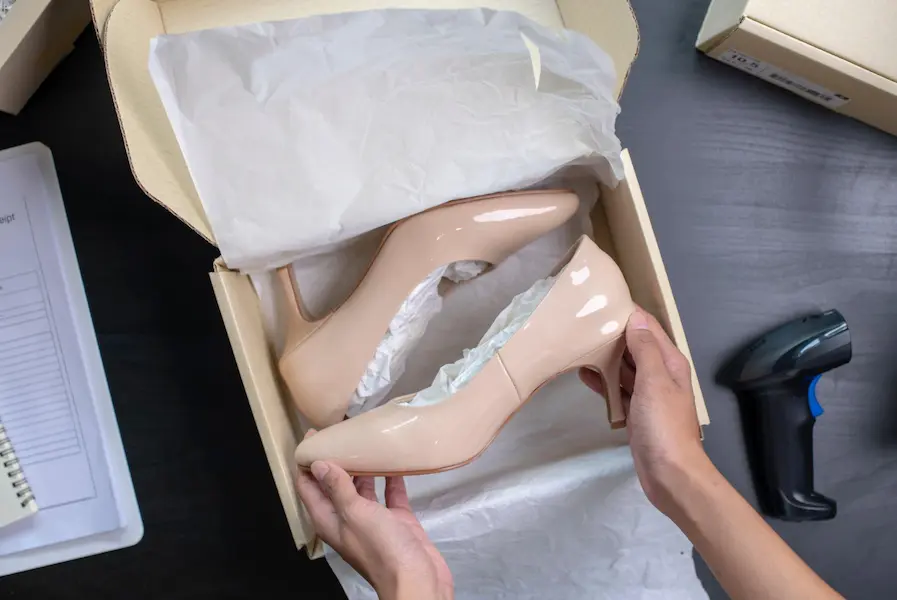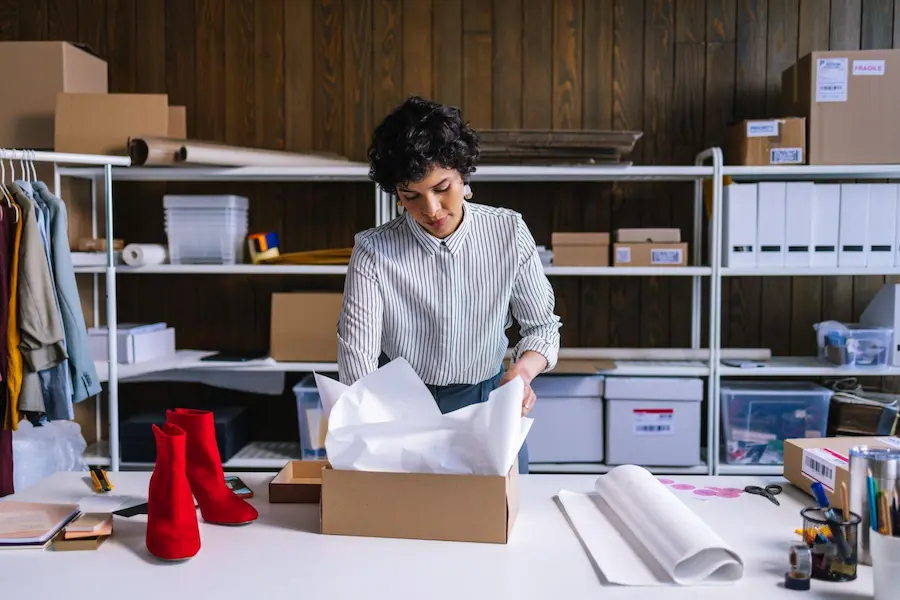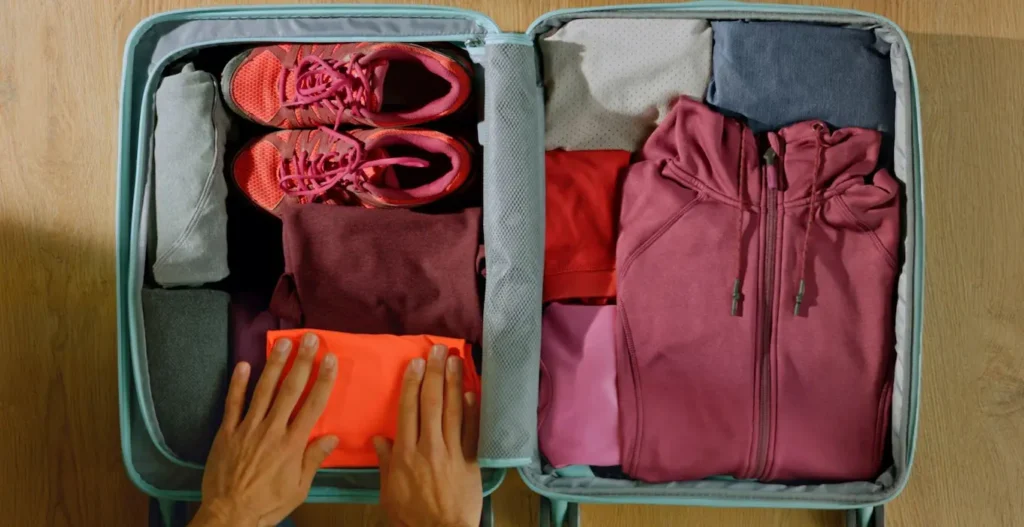Are you planning a move and wondering how to pack your shoes efficiently and protectively?
Packing shoes for a move requires extra care to ensure they arrive at your new home in good condition.
This article will provide a comprehensive guide on pack shoes for moving, ensuring they remain organized, undamaged, and ready to wear in your new place.
So let’s dive in and learn the best practices for packing shoes during a move.
Pack Shoes for Moving: Introduction
A systematic approach can make all the difference when pack shoes for moving. By following these steps, you’ll be able to protect your shoes and minimize the chances of any damage during transportation.
Sort and Declutter
Before you start packing shoes for moving, it’s a good idea to sort through your shoes and declutter. Assess which pairs you want to keep and which you can donate, sell, or discard. This will help you reduce the number of shoes you need to pack and make the process more efficient.
Gather Packing Supplies
To pack shoes for moving properly, gather the necessary packing supplies.
Here’s what you’ll need:
- Sturdy Moving boxes
- Packing paper or tissue paper
- Bubble wrap
- Shoe bags or cotton pillowcases
- Packing tape
- Permanent markers
- Labels or stickers
Having these supplies ready will ensure a smooth and organized packing experience.

Clean and Dry the Shoes
Before packing shoes for moving, ensure they are clean and dry. Remove any dirt or debris and allow them to air dry completely. This step prevents the growth of mould or unpleasant odors during transit.
Use Original Shoeboxes
If you have the original shoeboxes for your shoes, it’s best to utilize them. These boxes are designed specifically for the shoes, providing the ideal protection and support. Wrap each shoe in acid-free tissue paper before returning it to its original box.
Wrap individually with Packing Paper.
For shoes without original boxes, individually wrap each pair with packing or tissue paper. This will help prevent scuffs, scratches, and other damage during transportation.

Utilize Shoe Bags
Consider placing each pair of shoes in a separate bag or a clean cotton pillowcase before packing shoes for moving, This additional layer of protection prevents the shoes from rubbing against each other. It minimizes the chances of scuffing or damage.
Opt for Shoe Storage Boxes
Consider using shoe storage boxes to invest in long-term shoe storage solutions. These boxes are designed to hold multiple pairs of shoes and provide adequate protection during a move. They often come with dividers or compartments to keep the shoes organized and prevent them from shifting during transit.
Fill Empty Spaces
Fill empty spaces with socks, small clothing items, or packing paper to prevent shoes from moving inside the boxes. This helps maintain the structure and stability of the boxes, reducing the risk of shoes getting damaged or misshapen during transit.
Label and Organize
As you pack shoes for moving, it’s essential to label and organize them effectively. Use permanent markers or labels to identify the contents of each box. You can categorize them by shoe type, season, or any other system that works for you. This makes unpacking much easier and helps you locate specific pairs quickly.

Pack in Sturdy Moving Boxes
When packing your shoes, opt for sturdy moving boxes that can withstand the weight and protect the contents. Avoid overpacking the boxes to prevent them from becoming too heavy or the shoes from getting squished. Distributing the shoes across multiple boxes is better than overburdening a single box.
Consider Climate and Conditions
Take into account the climate and conditions during your move. If you’re moving to an area with high humidity, consider using moisture-absorbing packets or silica gel packs to protect your shoes from moisture damage. Similarly, if you’re moving in cold weather, avoid leaving your shoes in a cold vehicle for an extended period, as extreme temperatures can affect their quality.
Pack in Layers
To maximize space and protect your shoes, pack them in layers. Start with heavier shoes at the bottom and place lighter, more delicate pairs on top. You can use cardboard dividers or bubble wrap to create layers and provide additional cushioning.
Seal and Secure the Boxes
Once you’ve packed your shoes, seal the boxes securely with packing tape. Ensure all openings are tightly closed to prevent dust, dirt, or moisture from entering the boxes. Double-check the seals to ensure they are secure and won’t come undone during transportation.

Load with Care
When loading the packed shoe boxes into a moving truck or vehicle, handle them with care. Place them upright, preferably on top of other sturdy and stable items. Avoid stacking heavy items on the shoe boxes to prevent crushing or damaging the shoes.
In conclusion, moving shoes requires a systematic approach to remain safe and undamaged. Following the steps outlined above, you can pack your shoes efficiently, protect them from scuffs and scratches, and organize them for easy unpacking in your new home.
The Man and Van Hire provide a comprehensive and step-by-step guide about packing tips that helps you pack and move your precious and usable things safely.
FAQs
Should I pack each shoe individually?
Yes, it’s recommended to wrap and pack each shoe individually to prevent damage and maintain its condition.
Can I use plastic bags instead of shoe bags?
While plastic bags can provide some protection, it’s best to use shoe bags or cotton pillowcases as they allow the shoes to breathe and minimize the chances of odors or mould.
What is the best way to pack shoes when moving?
When moving, the best way to pack shoes for moving is to clean them thoroughly, stuff them with socks or tissue paper to maintain their shape and wrap each pair individually in protective material.
How do professional movers pack shoes for moving?
Professional movers typically pack shoes by cleaning them, then wrapping each pair individually in a protective material such as bubble wrap or packing paper.
How do you pack shoes for travel?
To pack shoes for travel, clean them and stuff them with socks or tissue paper to maintain their shape.



